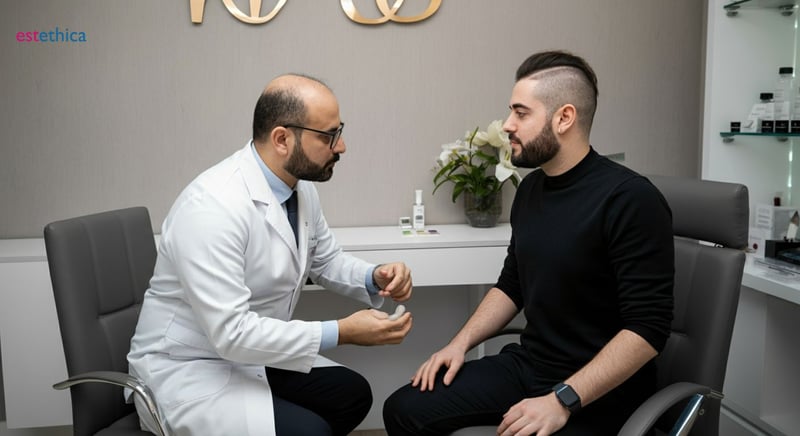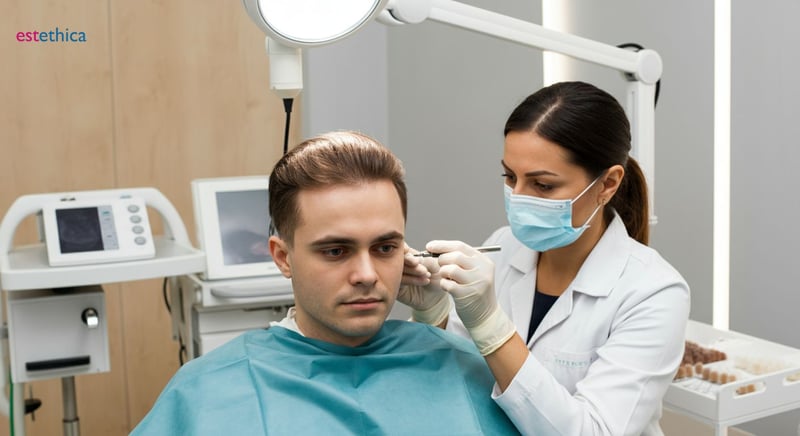Unlocking the Secrets of Hair Transplant: Your Comprehensive Guide
Discover the secrets to successful hair transplants with the latest techniques and comprehensive care for natural-looking hair restoration.
The world of hair transplant is vast and intricate, with various methods and techniques at your disposal to achieve the best hair restoration results. Whether you are at the early stages of considering a hair implant or have already decided to undergo the procedure, understanding the nuances of hair transplantation is crucial. Through this comprehensive guide, we'll unravel the secrets behind hair transplants, preparing you for what to expect and how to maximize results for a fuller, natural look.
Understanding Hair Transplant: What You Need to Know
Exploring Hair Transplant Techniques
Hair transplant is a popular solution for those seeking hair restoration. It involves relocating hair follicles from a donor site to a balding area. Techniques like Follicular Unit Extraction (FUE) and Direct Hair Implantation (DHI) are commonly used. FUE involves extracting individual follicles, while DHI uses a specialized tool for implantation. Each method offers unique benefits, such as minimal scarring with FUE and precise placement with DHI.
Factors Influencing Hair Transplant Success
- Donor hair quality: Healthy follicles ensure better results.
- Surgeon's expertise: Skilled professionals enhance success rates.
- Post-surgery care: Proper care aids in optimal recovery.
Understanding these factors helps in achieving desired outcomes. For instance, choosing a clinic with experienced surgeons can significantly impact the success of the procedure.
Steps to Prepare for Hair Transplant Surgery
- Consultation: Discuss goals and expectations with a specialist.
- Pre-surgery instructions: Follow guidelines for medications and lifestyle.
- Day of surgery: Arrive prepared and relaxed for the procedure.
Proper preparation is crucial for a smooth surgery experience. For example, avoiding certain medications before surgery can reduce complications.

Preparing for Your Hair Transplant Surgery: Essential Steps
Setting Realistic Expectations for Hair Restoration
Understanding the potential outcomes of hair restoration is crucial. Patients should be aware that results vary based on individual factors such as hair type and scalp condition. For instance, someone with thick hair may experience denser coverage compared to those with finer hair. Consulting with a specialist can help set achievable goals, ensuring satisfaction with the final results.
Pre-Surgery Guidelines for Optimal Results
- Dietary adjustments: Consuming a balanced diet supports healing.
- Medication review: Some medications may need to be paused.
- Hydration: Staying well-hydrated aids in recovery.
Following these guidelines can significantly impact the surgery's success. For example, adequate hydration improves blood circulation, which is beneficial for graft survival.
- Consultation: Discuss any concerns with your surgeon.
- Preparation: Arrange for post-surgery transportation and care.
- Relaxation: Ensure a good night's sleep before the procedure.
These steps help create a stress-free environment, enhancing the overall experience. For instance, having a friend or family member assist post-surgery can alleviate anxiety and promote a smoother recovery.

Post-Procedure Care: Ensuring Optimal Hair Restoration
Effective Post-Procedure Practices for Hair Transplant Success
After undergoing a hair transplant, adhering to post-procedure care is crucial for optimal hair restoration. This involves following specific instructions provided by your surgeon, which may include gentle washing techniques and avoiding strenuous activities. For instance, using a mild shampoo and avoiding direct sunlight can protect the newly transplanted follicles.
Managing Discomfort and Promoting Healing
Post-surgery discomfort is common, but it can be managed effectively with prescribed medications. Additionally, maintaining a healthy lifestyle supports the healing process. For example, consuming a nutrient-rich diet and staying hydrated can enhance recovery and promote hair growth.
Key Post-Procedure Care Tips
- Avoid touching or scratching the scalp to prevent infection.
- Sleep with your head elevated to reduce swelling.
- Follow a balanced diet to support hair growth.
These practices not only aid in recovery but also ensure the longevity of the hair transplant results. For example, elevating your head while sleeping can significantly minimize swelling, enhancing comfort during the initial recovery phase.
- Follow your surgeon's washing instructions carefully.
- Avoid physical activities that may strain the scalp.
- Attend follow-up appointments to monitor progress.
By adhering to these steps, patients can maximize the success of their hair restoration journey. Regular follow-up appointments allow for professional assessment and timely intervention if needed, ensuring the best possible outcomes.

Exploring Advanced Techniques: Follicular Unit Extraction Explained
Advantages of Follicular Unit Extraction (FUE)
Follicular Unit Extraction (FUE) is a cutting-edge hair restoration technique that offers several advantages over traditional methods. One of the primary benefits is minimal scarring, as FUE involves extracting individual hair follicles, leaving only tiny, barely visible marks. This makes it an ideal choice for those who prefer short hairstyles. Additionally, FUE boasts a shorter recovery time, allowing patients to resume their daily activities more quickly. For example, many patients report returning to work within a week of the procedure.
The FUE Process: Step-by-Step
- Consultation: The process begins with a detailed consultation to assess the patient's hair loss pattern and determine the best approach.
- Extraction: Individual hair follicles are carefully extracted from the donor area using a specialized tool.
- Implantation: The extracted follicles are then meticulously implanted into the thinning areas, ensuring a natural-looking result.
This precise method ensures that the transplanted hair blends seamlessly with the existing hair, providing a natural appearance. For instance, the careful placement of follicles allows for a more uniform hair density, enhancing the overall aesthetic outcome.
Unique Benefits of FUE
- Natural-looking results: FUE's precision in follicle placement ensures a seamless blend with existing hair.
- Versatility: Suitable for various hair types and scalp conditions, making it accessible to a wide range of patients.
- Minimal downtime: Patients can quickly return to their normal routines, enhancing convenience.
These benefits make FUE a preferred choice for many seeking hair restoration. For example, individuals with active lifestyles appreciate the minimal downtime, allowing them to maintain their routines without significant interruption.
Innovative Hair Transplant Techniques: FUE and DHI
Comprehensive Post-Procedure Care for Optimal Recovery
Frequently Asked Questions
What are the main techniques used in hair transplantation?
How should I prepare for a hair transplant surgery?
What post-procedure care is necessary after a hair transplant?
What are the advantages of Follicular Unit Extraction (FUE)?
How does hair transplant success depend on the surgeon's expertise?
Discover the path to a healthier, more beautiful you with estethica's award-winning services. Call now for your free consultation and take the first step towards your transformation.
📞 Call for Your Free Consultation